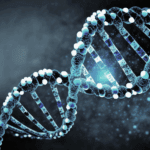In a world full of conveniences—like water-resistant coats, non-stick pans, and stain-proof carpets—few of us stop to wonder what invisible hitchhikers might be tagging along. But a growing body of research is now sounding the alarm on a class of synthetic chemicals nicknamed “forever chemicals”—and their unsettling ability to meddle with human DNA.
A new scientific study has found that 11 specific genes are consistently altered after exposure to PFAS (per- and polyfluoroalkyl substances), the compounds behind these “forever” pollutants. And some of those genes play a key role in keeping our brains healthy.
Let’s unpack what this all means, and why scientists around the world are urging action—before these invisible intruders do even more lasting harm.
What Are PFAS and Why Are They Called “Forever Chemicals”?
PFAS stands for per- and polyfluoroalkyl substances—a family of more than 12,000 man-made chemicals developed in the mid-20th century. Originally created for their ability to resist heat, grease, water, and stains, they’ve been used in a staggering range of consumer products: from Teflon cookware and fast-food wrappers to firefighting foam and waterproof makeup.
But here’s the catch: PFAS don’t naturally break down. Ever. They’re designed to endure—and that’s exactly what they do, whether in a product, the environment, or inside your body. That’s why they’ve been given the unnerving nickname “forever chemicals.”
In fact, studies have shown that PFAS can remain in the bloodstream for years and accumulate in vital organs over time. Even people living far from industrial centers are showing signs of exposure. These substances are now detectable in soil, rivers, rainwater, and even the Arctic ice.
The DNA Disruption: What the Latest Research Found
A team of scientists recently took a closer look at how PFAS interact with our genes—not just in terms of health outcomes, but on a cellular level. What they discovered was surprising, and more than a little unsettling.
Using advanced genetic tools, researchers found that 11 genes consistently showed altered activity (known as gene expression) when exposed to various PFAS chemicals. This means that PFAS can “switch on” or “turn down” the activity of certain genes, like adjusting the volume knob on a stereo.
Read more: Scientists Discover a Bacteria That Eats Toxic “Forever Chemicals”—Could This End Pollution?
Here’s the twist: many of these affected genes are directly linked to brain and nervous system function. Some of them help manage neural development, communication between brain cells, and the body’s ability to handle oxidative stress—a form of cellular damage linked to aging and diseases like Alzheimer’s.
This suggests that PFAS might not just be bad for the body—they could also be interfering with how our brains function, especially over the long term.
More Than Just 11 Genes: A Cascade of Changes
While the 11 core genes caught scientists’ attention due to their consistent response, the study also revealed that hundreds of other genes changed their behavior as well—but in more unpredictable ways. Different PFAS chemicals appeared to impact different sets of genes.
This complicates the picture significantly. It means PFAS don’t affect everyone the same way, and their impact might vary depending on the type of PFAS involved, how long someone was exposed, and what genetic vulnerabilities they already carry.
In other words, the genetic chaos they cause could be even broader than we think—and much harder to detect or treat.
How PFAS Invade the Brain
One of the most shocking abilities of PFAS is their knack for crossing the blood-brain barrier. This barrier is like a high-security checkpoint meant to protect the brain from harmful substances. Most toxins get blocked. PFAS? Not so much.
Once these chemicals sneak past the gate, they can start interfering with delicate neural pathways. The study’s findings back up what many scientists had long suspected: that PFAS may be contributing to neurodevelopmental problems, behavioral disorders, and cognitive decline—though more research is needed to fully understand the long-term effects.
What Does This Mean for Human Health?
Researchers have been raising red flags about PFAS for years. Prior studies have already linked PFAS exposure to:
- Weakened immune function (including reduced vaccine effectiveness)
- Increased risk of certain cancers, like kidney and liver cancer
- Hormonal disruptions, particularly in thyroid function
- High cholesterol and metabolic issues
- Fertility problems and low birth weight in infants
Now, with this new study pointing toward actual DNA-level disruption—particularly in brain-related genes—concerns are reaching a whole new level.
Scientists are now considering the possibility of using these affected genes as biomarkers. That means they could act as early warning signs in the body—potentially helping doctors identify PFAS exposure before symptoms start to show.
Read more: Tesla Dreamed It—Now Wireless Electricity Is Closer To Reality Than Ever
The Global Fallout: Why We’re All Affected
The reality is, almost everyone on Earth has been exposed to PFAS at some level. They’re in our water, our air, our food, and the very products we use every day. Even newborns have been found with PFAS in their umbilical cord blood, passed down from mother to child.
And because these chemicals are so durable, they continue to cycle through the environment long after they’ve been released—spreading from landfills, factories, and wastewater plants into soil, rivers, and beyond.
No one is truly untouched.
What Can Be Done? The Push for Regulation
In light of growing scientific evidence, many governments are finally starting to crack down on PFAS. Some actions already underway include:
- Banning certain PFAS in food packaging, cosmetics, and cookware
- Setting limits for PFAS levels in drinking water
- Requiring industries to report and reduce PFAS emissions
- Funding clean-up projects for contaminated sites
The U.S. Environmental Protection Agency (EPA) has recently proposed classifying some PFAS as hazardous substances, while the European Union is considering a near-total ban on most PFAS under a sweeping new proposal.
But these efforts, while critical, face enormous logistical and financial hurdles. Cleaning up PFAS-contaminated areas is slow, costly, and technically difficult. Replacing PFAS in manufacturing processes with safer alternatives is another massive challenge.
Looking Ahead: A Wake-Up Call in Our Genes
This latest research adds a chilling new layer to what we already know about “forever chemicals.” It’s no longer just about what PFAS do to our organs—but what they might be rewriting in the script of our very biology.
Genes don’t lie. And what they’re now revealing is a growing record of chemical interference—a molecular footprint left by decades of unchecked industry and invisible exposure.
While more studies are needed to fully map the long-term effects, one thing is clear: PFAS are not passive pollutants. They’re active players, rewriting the way our bodies function—possibly for generations to come.
Read more: Are We Playing God? Scientists Raise Alarm as Lab-Made Human DNA Project Advances
So, What Can You Do?
Until governments catch up, here are a few small steps you can take to reduce your PFAS exposure:
- Use stainless steel or cast-iron cookware instead of non-stick pans
- Avoid stain-resistant or water-repellent treatments on fabrics and carpets
- Check labels—steer clear of “fluoro” or “PTFE” in personal care products
- Filter your drinking water with activated carbon or reverse osmosis systems
- Stay informed as research and regulations evolve
Knowledge is the first step toward change—and now, thanks to science, we have a clearer picture of what’s at stake.










